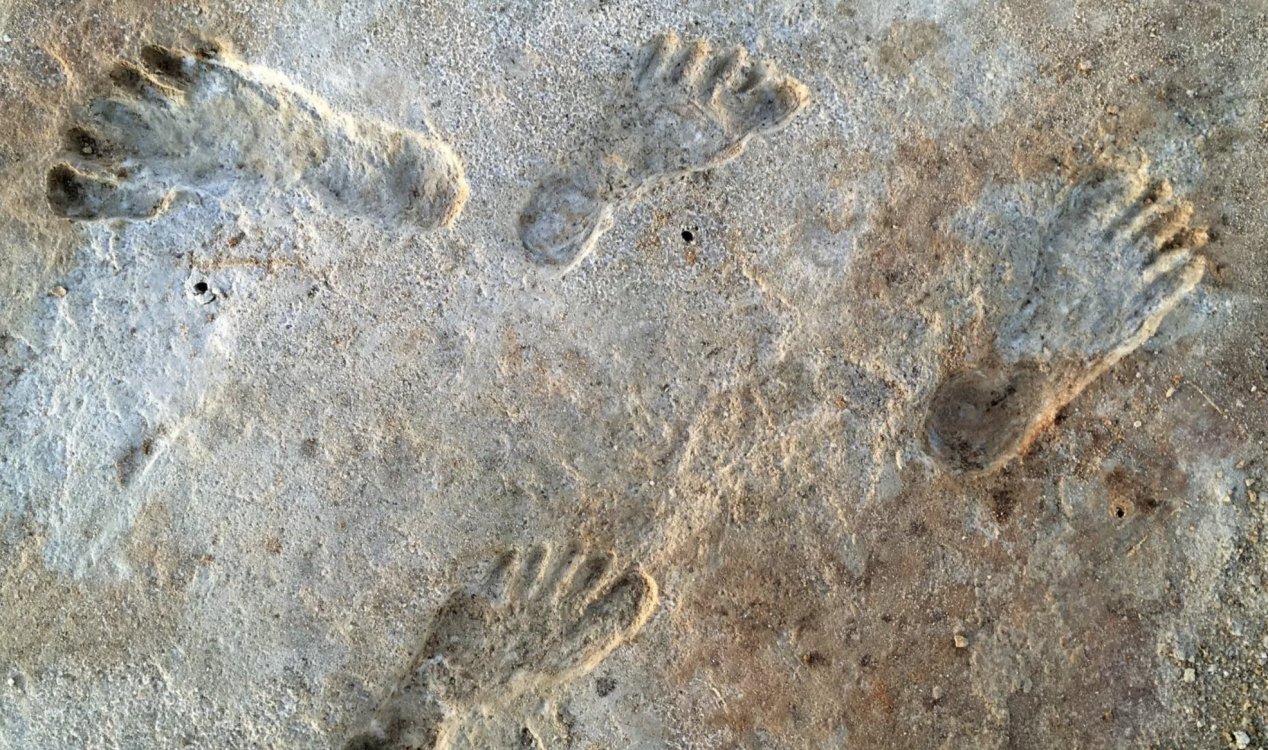Archaeology & History
October 8, 2023 · 19 comments
19 comments

These footprints are the real deal. Image Credit: National Park Service
The find was deemed particularly significant as, until recently, the available evidence had suggested that humans had first arrived in North America between 11,000 to 13,000 years ago.
At the time, scientists at the US Geological Survey had determined their age by conducting an analysis of tiny seeds that were embedded inside them.
While compelling, this method did not satisfy everyone and now, two years on, the same team is back with another study confirming once and for all that the footprints are as old as believed.
The new study, which offers corroborating findings using multiple dating techniques, dates the prints to between 21,000 and 23,000 years ago at the time of the Last Glacial Maximum.
The discovery could serve to rewrite what we know about the history of modern humans in North America and might even push their arrival on the continent back further still.
"These finds indicate the presence of humans in North America for approximately two millennia during the Last Glacial Maximum south of the migratory barrier created by the ice sheets to the north," the researchers wrote in the original study.
"This timing coincided with a Northern Hemispheric abrupt warming event, Dansgaard-Oeschger event 2, which drew down lake levels and allowed humans and megafauna to walk on newly exposed surfaces, creating tracks that became preserved in the geologic record."
Source: Live Science | Comments (19)
New study confirms age of oldest footprints in North America
By T.K. RandallOctober 8, 2023 ·
 19 comments
19 comments
These footprints are the real deal. Image Credit: National Park Service
Scientists have confirmed that the footprints at White Sands National Park really are 23,000 years old.
The prints, which made headline news back in 2021, were discovered in layers of soil at the White Sands national park in New Mexico.The find was deemed particularly significant as, until recently, the available evidence had suggested that humans had first arrived in North America between 11,000 to 13,000 years ago.
At the time, scientists at the US Geological Survey had determined their age by conducting an analysis of tiny seeds that were embedded inside them.
While compelling, this method did not satisfy everyone and now, two years on, the same team is back with another study confirming once and for all that the footprints are as old as believed.
The discovery could serve to rewrite what we know about the history of modern humans in North America and might even push their arrival on the continent back further still.
"These finds indicate the presence of humans in North America for approximately two millennia during the Last Glacial Maximum south of the migratory barrier created by the ice sheets to the north," the researchers wrote in the original study.
"This timing coincided with a Northern Hemispheric abrupt warming event, Dansgaard-Oeschger event 2, which drew down lake levels and allowed humans and megafauna to walk on newly exposed surfaces, creating tracks that became preserved in the geologic record."
Source: Live Science | Comments (19)

The Unexplained Mysteries
Book of Weird News
AVAILABLE NOW
Take a walk on the weird side with this compilation of some of the weirdest stories ever to grace the pages of a newspaper.
Click here to learn more

Support us on Patreon
BONUS CONTENTFor less than the cost of a cup of coffee, you can gain access to a wide range of exclusive perks including our popular 'Lost Ghost Stories' series.
Click here to learn more
Ancient Mysteries and Alternative History
Unexplained TV, Books, Film and Radio
UK and Europe
Ghosts, Hauntings and The Paranormal
Total Posts: 7,779,937 Topics: 325,660 Members: 203,950
Not a member yet ? Click here to join - registration is free and only takes a moment!
Not a member yet ? Click here to join - registration is free and only takes a moment!



































Please Login or Register to post a comment.